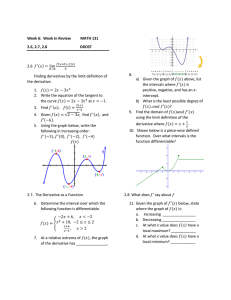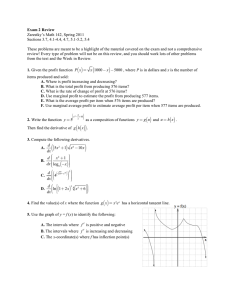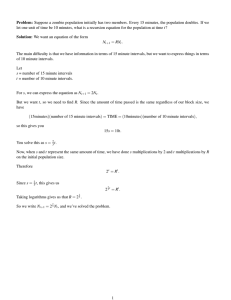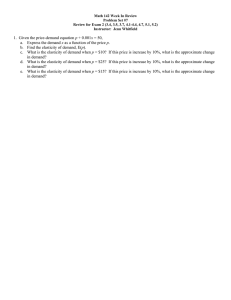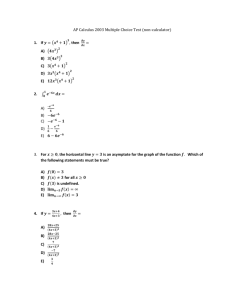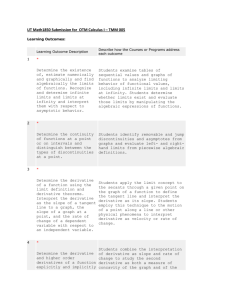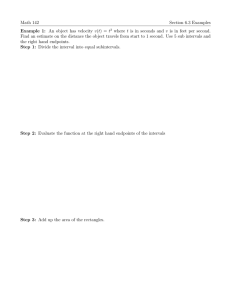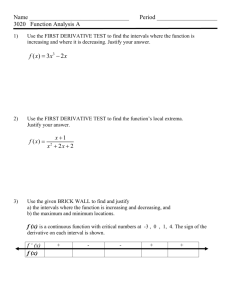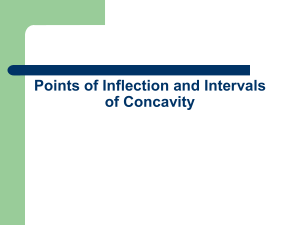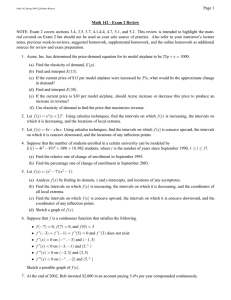space,
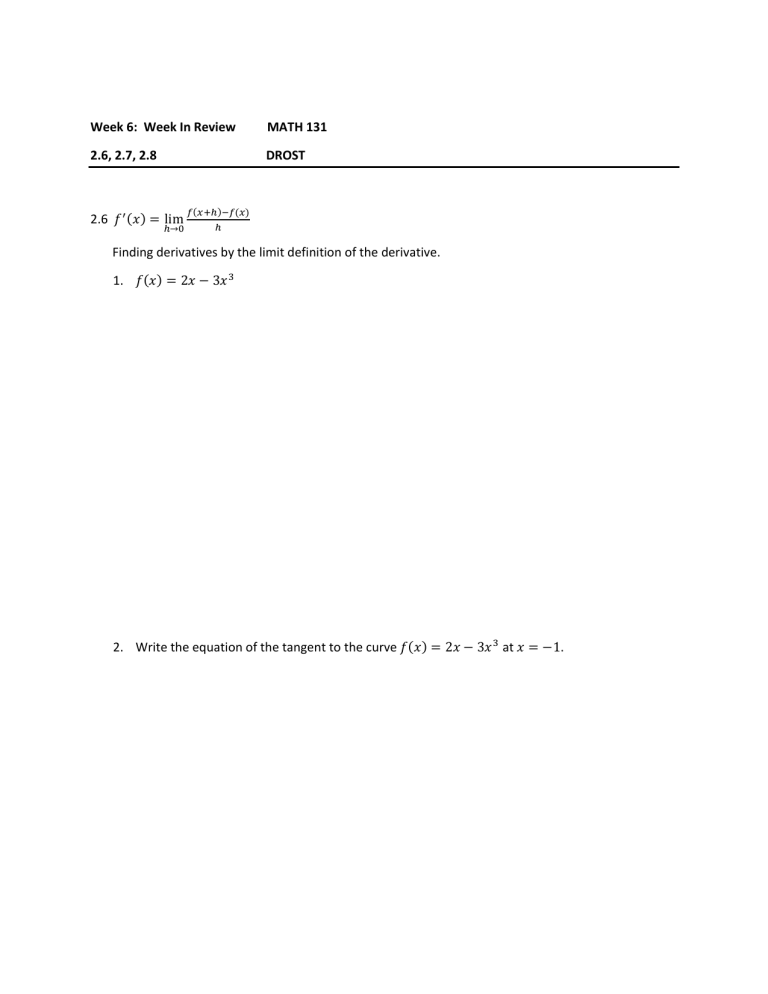
Week 6: Week In Review MATH 131
2.6, 2.7, 2.8 DROST
2.6 𝑓
′ (𝑥) = lim ℎ→0 𝑓(𝑥+ℎ)−𝑓(𝑥) ℎ
Finding derivatives by the limit definition of the derivative.
1.
𝑓(𝑥) = 2𝑥 − 3𝑥
3
2.
Write the equation of the tangent to the curve 𝑓(𝑥) = 2𝑥 − 3𝑥 3
at 𝑥 = −1 .
3.
Find 𝑓 ′ (𝑎), 𝑓(𝑡) =
2𝑡+1 𝑡−5
4.
Given 𝑓(𝑥) = √2 − 3𝑥, find 𝑓 ′ (𝑥), and 𝑓′(−6) .
5.
Using the graph below, write the following in increasing order: 𝑓
′
(−3), 𝑓
′
(0), 𝑓
′
(−2), 𝑓′(−4)
2.7. The Derivative as a Function
6.
Determine the interval over which the following function is differentiable. 𝑓(𝑥) = { 𝑥
−2𝑥 + 6, 𝑥 < −2
2
+ 10, −2 ≤ 𝑥 ≤ 2 𝑥+6 𝑥−4
, 𝑥 > 2
7.
At a relative extrema of 𝑓(𝑥) , the graph of the derivative has _______________.
8.
a) Given the graph of 𝑓(𝑥) above, list the intervals where 𝑓′(𝑥) is positive, negative, and has an xintercept. b) What is the least possible degree of 𝑓(𝑥), 𝑎𝑛𝑑 𝑓′(𝑥) ?
9.
Find the domain of 𝑓(𝑥)𝑎𝑛𝑑 𝑓′(𝑥) using the limit definition of the derivative where 𝑓(𝑥) = 𝑥 +
1 𝑥
.
10.
Shown below is a piece-wise defined function. Over what intervals is the function differentiable?
2.8 What does 𝑓′ say about 𝑓
11.
Given the graph of 𝑓′(𝑥) below, state where the graph of 𝑓(𝑥) is: a.
Increasing ________________ b.
Decreasing ________________ c.
At what x value does 𝑓(𝑥) have a local maximum? ____________ d.
At what x value does 𝑓(𝑥) have a local minimum? ____________
12.
Given the graph of 𝑓(𝑥) , estimate the intervals over which 𝑓 ′ (𝑥) is increasing or decreasing.
13.
Sketch the graph of a function which satisfies all of the given conditions. a.
𝑓 ′ b.
𝑓
′
(1) = 𝑓 ′ (−1) = 0,
(𝑥) < 0 𝑖𝑓 |𝑥| < 1 , c.
𝑓
′ (𝑥) > 0 𝑖𝑓 1 < |𝑥| < 2, d.
𝑓 e.
𝑓
′ (𝑥) = −1 𝑖𝑓 |𝑥| > 2,
′′ (𝑥) < 0 𝑖𝑓 − 2 < 𝑥 < 0, f.
𝑖𝑛𝑓𝑙𝑒𝑐𝑡𝑖𝑜𝑛 𝑝𝑜𝑖𝑛𝑡𝑠 (0,1)
14.
Let 𝑓(𝑥) = 𝑥 4 − 3𝑥 2 , 𝑓
′ (𝑥) = 4𝑥 3 𝑓
′′ (𝑥) = 12𝑥
− 6𝑥 , and
2
− 6 a.
Find the intervals where 𝑓(𝑥) is ↗ . b.
Find the intervals where 𝑓(𝑥) is ↘ .
c.
Find the intervals where 𝑓(𝑥) is ∪ .
d.
Find the intervals where 𝑓(𝑥) is ∩ .
e.
The inflection point(s) of 𝑓(𝑥) .
15.
a. What is the antiderivative of the velocity function? b. What is the antiderivative of the acceleration function?
